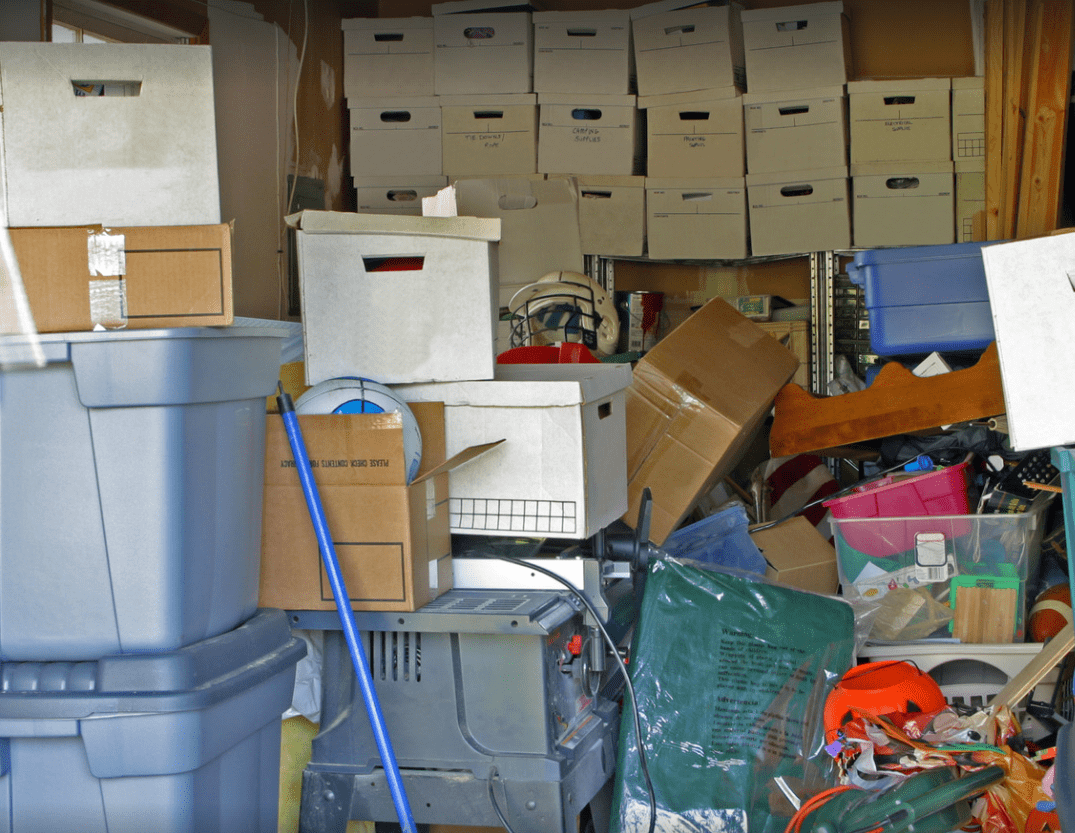Evaluating the Scale of the Basement Hoarding Cleanout
A basement hoarding cleanout can be overwhelming for anyone. But once you have a comprehensive understanding of the factors below, you can better gauge the scale of the cleanout and develop a plan to tackle it effectively.
Type of Items: Identifying the quantity and nature of the items helps in the basement hoarding cleanout process. Trash, recyclables, and valuable possessions must be removed differently.
- Accessibility and Safety: Evaluate potential safety risks such as unstable stacks, narrow passages, mold, pests, and structural damage. Addressing these hazards may require additional precautions or professional assistance.
- Time and Resources: Assess the resources available for the cleanout and the timeframe you need to complete the basement hoarding cleanout. This affects the manpower, equipment, disposal services, and storage options you will need to coordinate.
- Emotional Challenges: Recognize the emotional toll this process takes on the hoarder. Decluttering, especially for individuals with hoarding tendencies, requires compassion, support and communications throughout the hoarding cleanout process.
A Winning Strategy: How to clean out a hoarder’s basement
A basement hoarding cleanout requires sensitivity, patience, and a well-organized approach to ensure both the safety of those involved and the successful removal of clutter.
- Create a Plan with Clear Goals and Boundaries: Develop a detailed plan for the basement hoarding cleanout, including a timeline, allocation of resources (manpower, supplies, and disposal services). Work with the hoarder to define specific goals for the cleanout, such as reclaiming space, improving safety, or addressing specific concerns. Set boundaries to respect the hoarder’s emotional attachment to certain items.
- Ensure Safety Precautions: Identify and mitigate safety hazards before starting the cleanout, such as structural damage, mold, pests, or hazardous materials. Provide protective gear like gloves, masks, and goggles as needed.
- Use a Systematic Approach: Divide the items into categories for items to keep, donate, recycle, or discard. Break the basement into manageable sections and start with areas that are less cluttered. Adopt a systematic method for sorting and organizing items, such as the “three-box method” (keep, donate, discard).
- Address Mental Health Needs: Offer emotional support and encouragement throughout the process. Be patient and non-judgmental, listening to the hoarder’s concerns and offering reassurance. Recognize that hoarding disorder is a mental health condition that may require professional intervention.
Decluttering Techniques for your Basement Hoarding Cleanout
When tackling a basement hoarding cleanout, there are different methods you can try to streamline the process and help manage the overwhelming task. Each person and their decluttering process is different so having different options can help make the cleanout successful.
- The Four-Box Method: Label four boxes or bins with “Keep,” “Donate/Sell,” “Trash,” and “Storage” labels. As you go through items in the basement, place each item into one of these categories. This method helps in making quick decisions about what to do with each item.
- One-Touch Rule: Handle each item only once. When you pick up an item, decide immediately whether to keep, donate, or discard it. Avoid setting items aside to deal with later, as this can lead to indecision and procrastination.
- Declutter by Category: Group similar items like clothing, books or electronics together and declutter by category. This approach allows you to see the full extent of your belongings and makes it easier to identify duplicates or excess items.
- The KonMari Method: This method involves assessing each item based on whether it sparks joy. Hold each item in your hands and consider its emotional significance. Keep only the items that bring you joy and let go of the rest.
- Progressive Decluttering: Start with small, manageable tasks to build momentum. Begin with a specific area or category of items, such as clearing out a corner of the basement or decluttering old paperwork. Celebrate each small victory to stay motivated.
- Use Visual Aids: Take photos of the basement before and during the cleanout process to track progress and visualize the transformation. Seeing the difference can provide motivation and a sense of accomplishment.
When to Hire Professional Hoarding Cleanout Help for your Basement
Hiring compassionate, professional help from MSR Restoration for a basement hoarding cleanout becomes necessary when safety concerns arise due to blocked exits, unstable piles, and health risks from mold or pests. Additionally, if attempts to declutter have led to emotional distress or chronic relapse, or if the clutter violates health or safety codes, professional intervention is necessary. The professionals at MSR Restoration have expertise in handling large-scale cleanups, navigating legal requirements, eliminating biohazards, and providing ongoing support, which makes them invaluable in addressing complex cleanup needs while ensuring the well-being of everyone involved.
Long-Term Storage Solutions and Preventing Re-accumulation
Once the basement is cleared, establish routines for maintenance and clutter prevention to prevent re-accumulation. Plan regular sessions to declutter and organize the basement, whether it’s weekly, monthly, or quarterly. Consistency is key to maintaining progress and preventing clutter from building up again and will reinforce positive habits. Implement an organized storage system that prioritizes accessibility and visibility such as utilizing shelving and clear storage containers. By following these steps and approaching the basement hoarding cleanout with empathy, you can help the hoarder reclaim their space and improve their quality of life.


